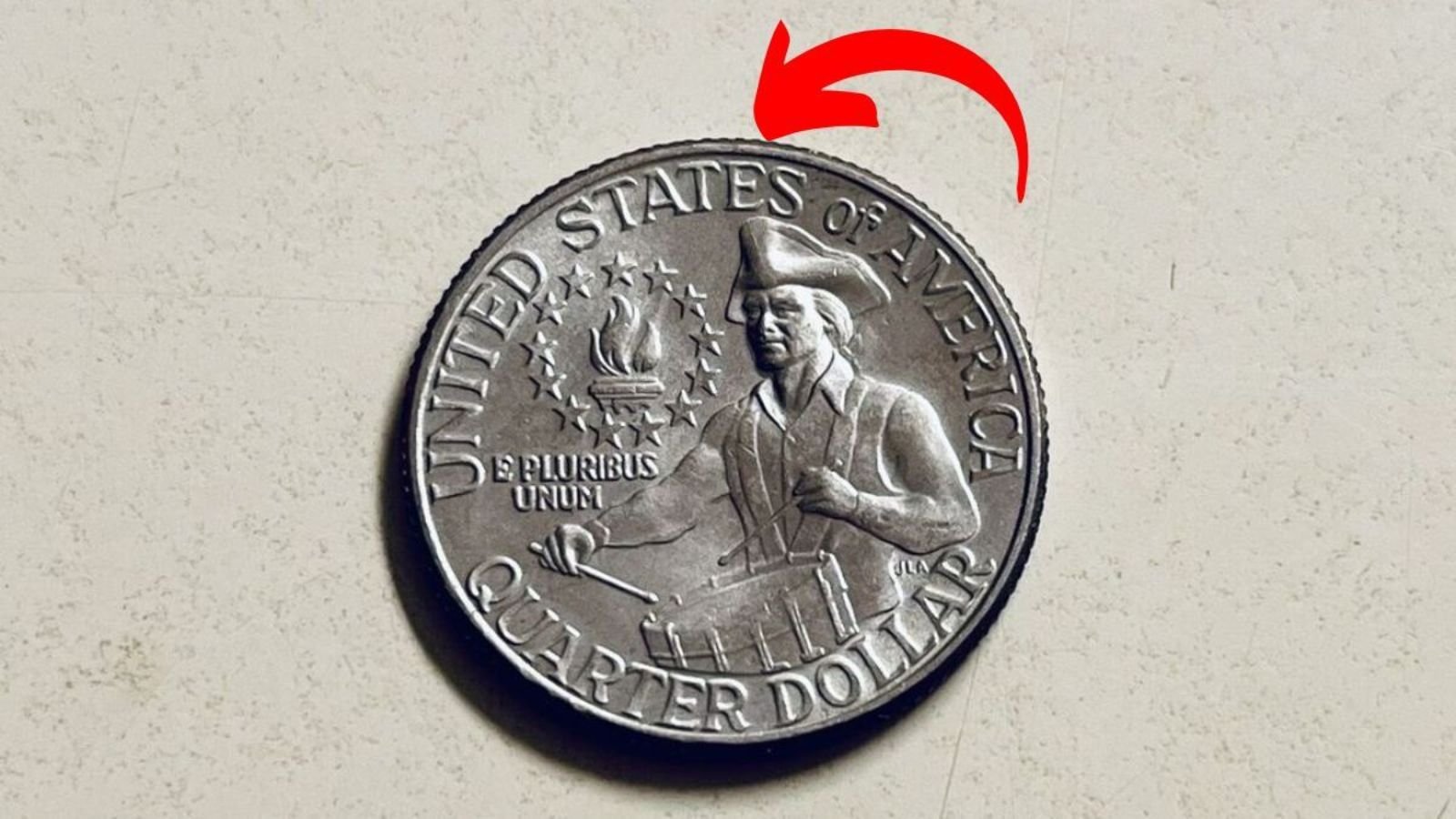In the world of coin collecting, certain pieces capture the imagination of enthusiasts like nothing else. Among those, the Rare Bicentennial Quarter stands out—not just for its historical significance but also for the shocking possibility that one of these coins might be worth an unbelievable $100 million. While millions of these quarters were minted and used in daily transactions across the United States, a few rare variants have stunned collectors and investors alike with their immense value.
So, what makes a coin you’ve probably handled in your pocket change suddenly shoot up to a worth that rivals mansions, sports cars, and rare artwork? Let’s take a closer look at the fascinating journey of the Rare Bicentennial Quarter, how to spot one, and why it might still be hiding in plain sight.
The Birth of a National Treasure: A Look at the Bicentennial Quarter
Back in 1976, the United States was celebrating a major milestone—200 years of independence. To mark this historic event, the U.S. Mint introduced a set of commemorative coins, including a very special quarter. This wasn’t just another version of the everyday coin. The Bicentennial Quarter was a one-time design change that would forever embed this coin in American history.
Unlike regular quarters, the Rare Bicentennial Quarter features a striking reverse design showing a Colonial drummer, symbolizing the Revolutionary War era. Surrounding him is a ring of 13 stars, a tribute to the original thirteen colonies. Flip it over to the front, and you still see George Washington’s profile, but with a twist: the date doesn’t show just one year. Instead, it reads 1776–1976, marking two centuries of freedom.
This symbolic redesign turned a common coin into a historic keepsake. The U.S. Mint struck hundreds of millions of these quarters across several facilities, but not all of them were created equal. Some very rare and unusual versions were produced, whether by accident or limited design—and those are the coins now catching headlines for their incredible value.
Why One Rare Bicentennial Quarter Is Reportedly Worth $100 Million
You may be wondering—how can a coin with a face value of just 25 cents fetch as much as $100 million? While it sounds far-fetched, it’s not without reason. There are several specific features that, when combined, make one particular Rare Bicentennial Quarter nearly priceless to collectors and investors.
1. Struck on a 90% Silver Planchet
During the minting process, most Bicentennial Quarters were made using a copper-nickel blend. However, a few rare ones were mistakenly struck on 90% silver planchets, typically used for collector’s editions or older coinage. These silver-strike errors are extremely rare and highly coveted.
2. Minting Errors
Collectors go wild for minting errors, and the Rare Bicentennial Quarter is no exception. Examples of this include double stamping, off-center images, misaligned designs, or even die cracks. Any of these rare minting anomalies can drastically increase a coin’s value.
3. Uncirculated or Proof Condition
Another major factor is condition. A coin that’s been used in everyday transactions loses much of its luster—literally and figuratively. But a Bicentennial Quarter that has been preserved in a mint or uncirculated condition, free from scratches and wear, can command thousands or even millions of dollars. Proof versions, especially those struck at the San Francisco Mint, are known for their flawless detail and mirror-like finish.
4. Historical Significance
Lastly, the historical weight of this coin adds yet another layer of appeal. It’s not just currency—it’s a symbol of American independence, a tribute to a nation’s resilience and revolutionary spirit. When rarity and symbolism combine, the market value can skyrocket—sometimes into the tens of millions.
So, when you combine precious metal content, unusual minting errors, perfect preservation, and national importance, it’s not surprising that one Rare Bicentennial Quarter has been valued as high as $100 million in the private collector market.
Is the $100 Million Quarter Still Out There?
Here’s the part that gets treasure hunters and everyday Americans excited—yes, this ultra-valuable coin could still be in circulation. It’s entirely possible that a rare silver or error version of the Bicentennial Quarter is sitting in a forgotten coin jar, change drawer, or even tucked away in a relative’s old wallet.
The truth is, most people don’t take the time to examine the change they receive from the grocery store or a vending machine. It’s common to quickly pocket a few coins without giving them a second glance. That’s exactly why rare coins often go unnoticed.
Coin collectors compare the hunt for a Rare Bicentennial Quarter to a modern-day treasure hunt. The odds are slim, but the reward could change your life. So before you roll up your change or spend it on snacks, it might be worth taking a closer look.
How to Spot a Rare Bicentennial Quarter: What to Look For
If this story has you reaching for your piggy bank, you’re not alone. But identifying a Rare Bicentennial Quarter isn’t as easy as spotting shiny silver. Here’s a more detailed checklist of what to look for:
✅ Date: 1776–1976
First and foremost, make sure your quarter reads 1776–1976 instead of a standard year. If it does, you’ve got a Bicentennial Quarter—now it’s time to go deeper.
✅ Reverse Design: Colonial Drummer
Turn the coin over. You should see a young drummer boy in a Colonial uniform, surrounded by a ring of 13 stars. This iconic image distinguishes the Bicentennial Quarter from all others.
✅ Mint Mark
Check for the tiny letter near Washington’s ponytail on the obverse (heads) side:
- “D” for Denver Mint
- “P” for Philadelphia (though sometimes no mark is used)
- “S” for San Francisco – These are especially valuable as many were proof coins.
✅ Material: Silver vs Copper-Nickel
The most valuable quarters are often struck in 90% silver. These tend to have a more reflective shine and are heavier than copper-nickel versions. A silver coin weighs around 6.25 grams, while standard ones weigh 5.67 grams.
✅ Condition: Mint State or Proof
If the coin looks unused, shows no signs of wear, and has a mirror-like finish, you might be holding a proof or uncirculated version. These are far rarer and far more valuable than worn or circulated coins.
✅ Error Signs
Finally, look for tell-tale signs of minting errors:
- Double stamping or “doubling”
- Off-center designs
- Blurred text or images
- Die cracks or rim damage
Any combination of the above could mean your quarter is a Rare Bicentennial Quarter worth thousands—or possibly millions.
If you believe you’ve found something special, don’t rush to sell it at a pawn shop. Instead, consult a professional coin appraiser or a trusted numismatics expert who can verify its authenticity and value.
A Rising Trend: Coin Collecting Goes Mainstream
Thanks to viral social media posts and news articles about hidden treasures like the Rare Bicentennial Quarter, interest in coin collecting has surged in recent years. People are realizing that the coins in their possession might not just be spare change—they could be untapped fortunes.
The joy of coin collecting isn’t just in the potential for wealth. It’s also a way to engage with history, art, and craftsmanship. Every coin tells a story. For beginners, starting a collection can be as simple as checking the dates and designs of your daily change. For seasoned collectors, it’s about hunting for those once-in-a-lifetime finds.
Auction houses have reported a rise in rare coin sales, with some pieces fetching tens of millions of dollars. Online communities and collector groups make it easier than ever to share tips, trade coins, and stay informed on market values. The Rare Bicentennial Quarter is now part of that growing narrative—a beacon of hope for amateur collectors and a crown jewel for experts.
Final Thoughts: Don’t Overlook What’s in Your Pocket
The story of the Rare Bicentennial Quarter is one of history, mystery, and immense value. It reminds us that even the smallest objects can carry immense worth—both financially and emotionally. While millions of these coins were produced, only a few possess the right combination of errors, condition, and material to be truly rare.
Still, that magical coin may be closer than you think. It could be in a forgotten drawer, an old wallet, or even in the change you get back at the gas station. The key is knowing what to look for and being curious enough to check.
So, the next time you receive a quarter with “1776–1976” stamped on it, don’t ignore it. Hold it up to the light, examine it closely, and consider the possibility—you might just be holding a Rare Bicentennial Quarter worth a life-changing sum.
Disclaimer: The values mentioned in this article are based on market trends and collector interest at the time of writing. Prices can vary greatly depending on condition, demand, and rarity. Always consult a certified numismatic appraiser for official valuations.
Some Important Link
| Telegram Group | Click Here |
| WhatsApp Group | Click Here |
| Home Page | Click Here |















